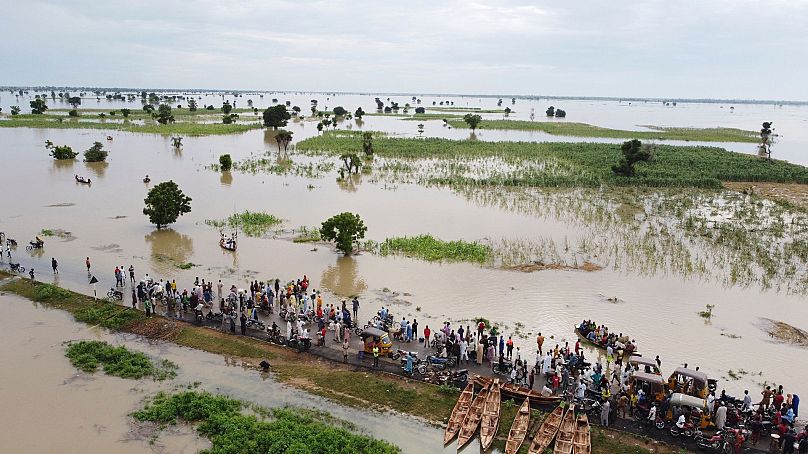Climate disasters displaced nearly 2 million children in sub-Saharan Africa last year.
The number of children in sub-Saharan Africa internally displaced by climate shocks nearly doubled last year, Save the Children has warned.
The figures - based on analysis of data from the Internal Displacement Monitoring Centre - lay bare the human toll of extreme weather.
At least 1.85 million children in sub-Saharan Africa were displaced within their countries by climate shocks at the end of 2022 compared to the one million similarly displaced in 2021.
These children ended up living in camps, with extended family, or in other temporary accommodation.
Ad-hoc arrangements like this can be hugely destabilising, warns Kijala Shako, head of advocacy, communications, campaigns and media for Save the Children’s East and Southern Africa Regional Office.
“When children lose their homes they lose almost everything: their access to healthcare, education, food, and safety,” she explains.
“They also lose the building blocks for mental and emotional stability and wellbeing, like a sense of routine, their friends, and the right to play.”
What is life like for children uprooted by climate disaster?
Though shocking, statistics can also be dehumanising. But behind the figure are millions of children who have had their lives uprooted by climate disaster.
Falmata 13, is from Borno state in northeast Nigeria where flooding last year forced over 30,000 people from their homes. Her name has been anonymised.
She remembers her home being “submerged” by the devastating flooding.
“On this fateful Friday I was returning from school and I kept hearing ‘rain is coming, rain is coming’. They gave us sacks to fill up with sand and place them in strategic corners,” she said.
“Suddenly I saw a big wave of water coming with speed towards our houses, everyone was in commotion, and my mum said we should pack our belongings and start running, we tried but we could barely pack enough.”
The teenager was separated from several members of her family and has not been able to make contact with them since.
“Life has been hard,” she says.
“We found a small room that has sheltered us but the structure is bad, as it has been spoilt by the rain, the ceilings are leaking, and some parts of the room are open.
“When I see the clouds, I am scared and it brings back memories of the flood that happened before.”
Which countries have the highest number of displacements?
The number of times children were internally displaced across sub-Saharan Africa in 2022 was also three times higher than the previous year.
7.4 million new internal displacements occurred during 2022 compared to 2.6 million in 2021.
This figure counts the times people were displaced – sometimes multiple times for one individual – even if they were able to return home by the end of the year.
Unfortunately, experiences like Falmata’s are becoming increasingly common, says Vishna Shah, director of advocacy, communications, campaigns and media for Save the Children’s West and Central Africa.
“In Nigeria and across the region, many children are like Falmata, terrified,” he said.
“They cling onto survival from one extreme weather event to the next, unsure whether unseasonable rains are a blessing for failing crops or whether they will wash away their homes.”
Nigeria, where Falmata lives, has the highest number of internal displacements due to climate disasters in 2022 at 2.4 million.
By the end of the year, at least 854,000 people remained displaced, roughly half of whom were children.
In nearby Somalia, about 6.6 million people - or 39 per cent of the population - have been forced into critical levels of hunger by five failed rainy seasons. The country recorded the second-highest number of internal displacements at 1.1 million people.
Sub-Saharan communities face some of the worst impacts of climate change, a crisis they have done the least to cause.
These communities contributed just 1.9 per cent of the world’s emissions between 1750 and 2021. Two-thirds of that total came from just one country — South Africa. The other 48 countries contributed just 0.6 per cent of the global emissions total.
Policymakers practitioners, businesses and civil society will discuss displacement risks at the United Nations Africa Climate Week, which begins today in Nairobi.












